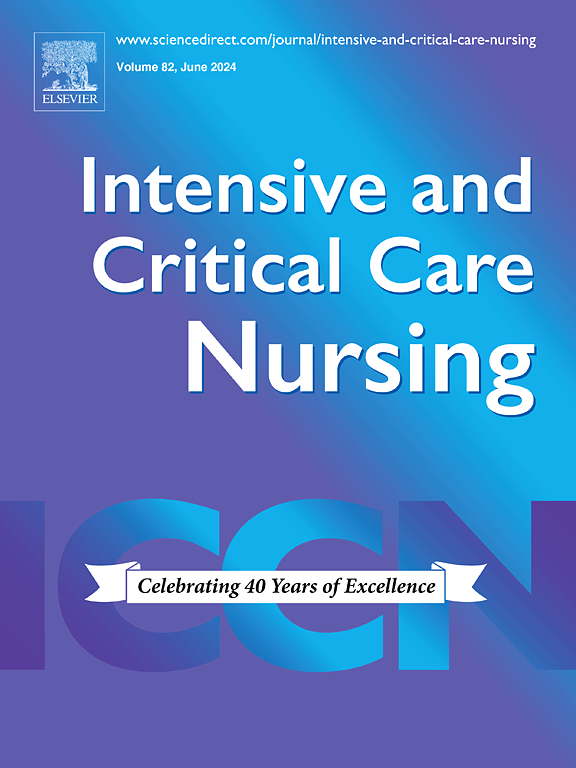The role of AI in emergency department triage: An integrative systematic review
IF 4.9
2区 医学
Q1 NURSING
引用次数: 0
Abstract
Background
Overcrowding in emergency departments (EDs) leads to delayed treatments, poor patient outcomes, and increased staff workloads. Artificial intelligence (AI) and machine learning (ML) have emerged as promising tools to optimize triage. Objective: This systematic review evaluates AI/ML-driven triage and risk stratification models in EDs, focusing on predictive performance, key predictors, clinical and operational outcomes, and implementation challenges.
Methods
Following PRISMA 2020 guidelines, we systematically searched PubMed, CINAHL, Scopus, Web of Science, and IEEE Xplore for studies on AI/ML-driven ED triage published through January 2025. Two independent reviewers screened studies, extracted data, and assessed quality using PROBAST, with findings synthesized thematically.
Results
Twenty-six studies met inclusion criteria. ML-based triage models consistently outperformed traditional tools, often achieving AUCs > 0.80 for high acuity outcomes (e.g., hospital admission, ICU transfer). Key predictors included vital signs, age, arrival mode, and disease-specific markers. Incorporating free-text data via natural language processing enhances accuracy and sensitivity. Advanced ML techniques, such as gradient boosting and random forests, generally surpassed simpler models across diverse populations. Reported benefits included reduced ED overcrowding, improved resource allocation, fewer mis-triaged patients, and potential patient outcome improvements.
Conclusion
AI/ML-based triage models hold substantial promise in improving ED efficiency and patient outcomes. Prospective, multi-center trials with transparent reporting and seamless electronic health record integration are essential to confirm these benefits.
Implications for Clinical Practice
Integrating AI and ML into ED triage can enhance assessment accuracy and resource allocation. Early identification of high-risk patients supports better clinical decision-making, including critical care and ICU nurses, by streamlining patient transitions and reducing overcrowding. Explainable AI models foster trust and enable informed decisions under pressure. To realize these benefits, healthcare organizations must invest in robust infrastructure, provide comprehensive training for all clinical staff, and implement ethical, standardized practices that support interdisciplinary collaboration between ED and ICU teams.
人工智能在急诊科分诊中的作用:一项综合系统综述
背景:急诊科(EDs)的过度拥挤导致治疗延误、患者预后不佳和工作人员工作量增加。人工智能(AI)和机器学习(ML)已经成为优化分流的有前途的工具。目的:本系统综述评估了急诊科中人工智能/机器学习驱动的分诊和风险分层模型,重点关注预测性能、关键预测因素、临床和操作结果以及实施挑战。方法根据PRISMA 2020指南,我们系统地检索PubMed、CINAHL、Scopus、Web of Science和IEEE explore,检索截至2025年1月发表的关于AI/ ml驱动的ED分诊的研究。两名独立审稿人筛选研究,提取数据,使用PROBAST评估质量,并按主题综合研究结果。结果26项研究符合纳入标准。基于机器学习的分类模型始终优于传统工具,通常达到auc;对于高视力的结果(如住院、ICU转院)0.80。关键预测指标包括生命体征、年龄、到达方式和疾病特异性标志物。通过自然语言处理整合自由文本数据,提高了准确性和灵敏度。先进的机器学习技术,如梯度增强和随机森林,在不同的种群中通常优于更简单的模型。报告的益处包括减少急诊科过度拥挤,改善资源分配,减少错误分类的患者,以及潜在的患者预后改善。结论基于ai / ml的分诊模型在提高急诊科效率和患者预后方面具有很大的前景。具有透明报告和无缝电子健康记录集成的前瞻性多中心试验对于确认这些益处至关重要。将人工智能和机器学习整合到急诊科分诊中可以提高评估的准确性和资源分配。通过简化患者转院和减少过度拥挤,早期识别高风险患者有助于更好的临床决策,包括重症监护和ICU护士。可解释的人工智能模型可以培养信任,并在压力下做出明智的决策。为了实现这些好处,医疗保健组织必须投资于强大的基础设施,为所有临床人员提供全面的培训,并实施道德的、标准化的实践,以支持急诊科和ICU团队之间的跨学科协作。
本文章由计算机程序翻译,如有差异,请以英文原文为准。
求助全文
约1分钟内获得全文
求助全文
来源期刊

Intensive and Critical Care Nursing
NURSING-
CiteScore
6.30
自引率
15.10%
发文量
144
审稿时长
57 days
期刊介绍:
The aims of Intensive and Critical Care Nursing are to promote excellence of care of critically ill patients by specialist nurses and their professional colleagues; to provide an international and interdisciplinary forum for the publication, dissemination and exchange of research findings, experience and ideas; to develop and enhance the knowledge, skills, attitudes and creative thinking essential to good critical care nursing practice. The journal publishes reviews, updates and feature articles in addition to original papers and significant preliminary communications. Articles may deal with any part of practice including relevant clinical, research, educational, psychological and technological aspects.
 求助内容:
求助内容: 应助结果提醒方式:
应助结果提醒方式:


